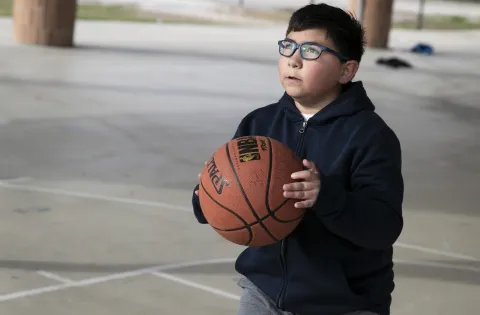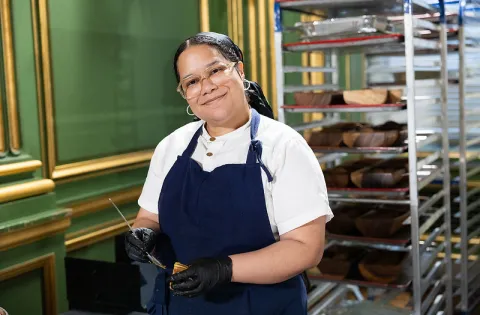When school is out, many children lose access to the nutritious meals they rely on during the academic year. That's where the Summer Food Service Program (SFSP) steps in. This essential program, supported by No Kid Hungry and administered by the USDA, helps ensure that kids can enjoy healthy meals even during summer break. Whether you're a parent, caregiver, community member or potential program sponsor, understanding how SFSP works can help make a real difference in your community.
What is the USDA Summer Food Service Program?
The USDA Summer Food Service Program - commonly referred to as SFSP - provides free meals and snacks to children during the summer months when school is not in session. The program is designed to ensure that all children, especially those in low-income areas, continue to receive the nutrition they need for healthy growth and development.
Locally, the SFSP program is operated by schools, local governments, nonprofits, camps and other organizations approved as sponsors. Meals are served at community hubs like schools, parks, libraries and churches. In some rural communities, meals may even be delivered to children's homes or made available through SUN Meals To-Go options. Summer EBT is another option for eligible, school-aged children as well.
Who is Eligible for the Summer Food Service Program (SFSP)?
The answer is simple: all children and teens ages 18 and under can receive free summer meals, no questions asked. No application, ID or proof of income is required at open free meal sites.
Additionally, young adults over 18 with disabilities who participate in school programs for people with disabilities can also receive free meals.
How Does the Summer Food Service Program Work?
At the federal level, SFSP is overseen by the Food and Nutrition Service (FNS), an agency within the USDA. State agencies - usually departments of education or health - administer the program locally. Approved sponsors are responsible for organizing meal distribution, staffing sites and reporting data to receive reimbursements for the meals they serve.
Meals are served in a variety of ways depending on your community's needs:
- Open sites in low-income areas provide meals to all children.
- Enrolled sites offer meals to kids participating in programs like summer school or recreational activities.
- Camps can serve meals to children who qualify for free or reduced-price school meals.
- Non-congregate rural sites may offer meal pick-up, curbside service or home delivery with parental consent.
The goal is to make meals as accessible as possible for all children, especially in communities where hunger doesn't take a summer break.
How Much Food Do Kids Receive That Participate in a Summer Food Service Program?
At most sites, children receive up to two free, reimbursable meals each day (typically breakfast and lunch). Camps may serve up to three meals per day per child.
These meals are designed to meet USDA nutrition standards, ensuring kids receive a balanced mix of protein, grains, fruits, vegetables and dairy. Meal options vary by site but are always nutritious and kid friendly.
Do Kids Need to Eat Meals at the Site Where It is Offered?
In the past, SFSP meals had to be eaten on-site. However, new flexibility introduced in recent years now allows for non-congregate meal service in some areas.
Now, in rural communities, approved program sponsors can offer meals through pick-up or delivery thanks to the non-congregate option. This is especially helpful for families in areas with limited transportation.
Parents should check with their local SFSP provider to see if take-home meals are available in their area. These options may be listed under programs like SUN Meals To-Go, which is the name used in many regions.
How Many Meals Do Children Receive Each Day?
Children participating in SFSP typically receive one to two meals per day, depending on the site and program type. For most community meal sites, kids receive breakfast and lunch. Camps or sites serving children in migrant communities may be approved to serve up to three meals daily.
Meals are usually served on weekdays throughout the summer, and exact schedules vary by site. Some programs may also provide weekend meal packs or distribute meals in bulk for pick-up or delivery.
Can My Child Get SFSP and Other Nutrition Assistance Programs at the Same Time?
Yes! Many families wonder whether their child can receive support from SFSP and other food programs. The good news is, yes - children can participate in SFSP and other nutrition assistance programs at the same time.
Participation in benefits programs like SNAP, WIC, Summer EBT (SUN Bucks) or the Food Distribution Program on Indian Reservations (FDPIR) does not prevent a child from receiving SFSP meals. In fact, these programs are designed to work together, forming a strong nutrition safety net for families during the summer and beyond.
How Many States Participate in Summer Food Service Programs?
As of mid-May 2025, USDA data shows that the following states are participating in the SFSP program: AK, AR, CA, CO, FL, GA, IN, KS, KY, MS, ND, OR, TX, VA, and WI. However, new states are added to the submissions finder every Friday all summer long, so be sure to check back regularly. To find out if your state currently has active SFSP sites, check the USDA's Summer Meals for Kids Site Finder, which is updated regularly.
Each year, more sites open as local organizations register to become sponsors or feeding locations. Some rural areas are now expanding their services through non-congregate meal models to better reach children in need.
How Can I Find a Local Summer Food Service Program?
There are several helpful tools available to learn where local summer food services programs are in your area:
- Use the USDA's Summer Meals for Kids Site Finder, which lets you search by zip code or address.
- Call the National Hunger Hotline at 1-866-3-HUNGRY (1-877-8-HAMBRE).
- Contact local schools, libraries, parks or community centers.
- Visit NoKidHungry.org for resources and local assistance information.
If your area doesn't have a meal site nearby, consider reaching out to a local school or nonprofit organization to discuss sponsoring a new site. It could be the start of something life-changing for kids in your community.
Help No Kid Hungry Keep Kids Fed During Summer Months
Hunger doesn't take a vacation - and neither do we. At No Kid Hungry, we work to ensure that every child has access to healthy food, all year long. That includes advocating for increased funding, expanding access to rural meal services and supporting sponsors and families across the country.
If you're wondering who funds the Summer Food Service Program, the short answer is the USDA - however, they rely on local organizations, community leaders and volunteers to bring the program to life. No Kid Hungry commits extensive time and resources to support summer meal and food programs across America, and we couldn't do it without the generous donations and efforts of people just like you.
Together, we can make sure that no child goes hungry this summer.
Image Credit: New Africa / Shutterstock



